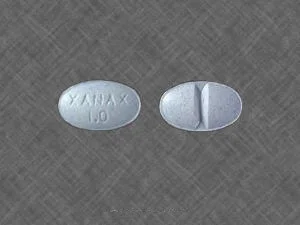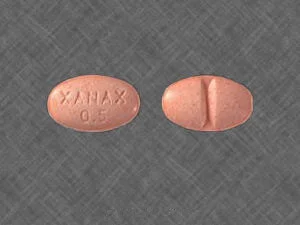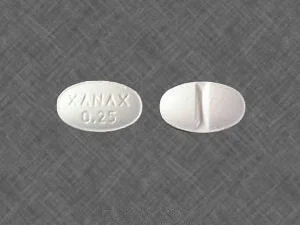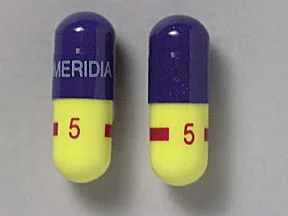Xanax (alprazol, generic name: alprazolam) is a commonly prescribed drug, which helps people with anxiety disorders, panic attacks, and, in other cases, insomnia. It belongs to the benzodiazepine group, which is a type of medication that has typical tranquilizing properties on the brain and the central nervous system. Although Xanax is effective in the short run, it is highly dependent and abusable, so it is important to know how long it remains in your system, particularly when testing drugs or to ensure drug safety or planning a tapering schedule.
Within this blog, we will discuss the duration of Xanax in your body, the factors that influence its duration, the detection periods of various drug tests, as well as the reasons why you would want to know.
What is Xanax?
Xanax acts through the mechanism of increasing the function of a neurotransmitter, GABA (gamma-aminobutyric acid) that quiets the overactivity of the brain. It results in feeling relaxed, less anxious and sedated.
Most commonly used in dosage of 0.25 to 2mg, it is available in immediate and extended release (XR) preparations.
How Long Does Xanax Take to Work?
Xanax has a rapid onset, particularly the immediate release one. The majority of individuals start to experience its effects within 15 to 60 minutes and its highest action in about 1 to 2 hours, after ingestion.
But the duration of its stay in your system is another thing – and it is determined by a number of factors.
Xanax Half-Life: The Science Behind It
The half-life of any drug refers to the period of time which is required to rid half of the drug in your blood.
- The average half-life of Xanax in healthy adults is 11 hours.
- This is however between 6 to 27 hours depending on personal aspects such as age, metabolism, liver function etc.
So the effects of Xanax can wear out after a few hours, but the drug itself remains in your system much longer.
How Long Xanax Stays in Your System (By Test Type)
Xanax is detectable in your system by drug tests in a length of time depending on the mode of testing:
Test Type Detection Window
Urine 4 days to 7 days
Blood 1 to 2 days
Saliva Up to 2.5 days
Hair Up to 90 days
1. Urine Test
This is the most widespread way of testing. Xanax usually stays in urine 4-7 days after last use -in chronic users might be longer.
2. Blood Test
The xanax can typically be detected in the blood up to 24-48 hours. Blood testing is an infrequently employed method because its detection window is limited and because it is an invasive method, although it can be applied in a hospital or during an accident investigation.
3. Saliva Test
Xanax can be detected in the saliva over a period of 2.5 days. They are rather rarer, but could be employed or utilized in legal cases.
4. Hair Follicle Test
Hair tests have the furthest detection time. Xanax is detectable in hair up to 90 days – however, this is a test of chronic use.
Factors That Influence How Long Xanax Stays in Your System
The period of time that Xanax remains in your body may greatly vary among people. Here are some key factors:
1. Dosage & Frequency
The more the dose and frequency the detection is long. With frequent use, users build up greater amounts of the drug in their body and particularly in fatty tissues.
2. Age
The elderly generally metabolize benzodiazepines more gradually resulting in a longer half-life and longer detection period.
3. Metabolism
The quicker a person is at getting rid of the drug, the faster the drug is dissolved. Other aspects such as food intake, activity and water content also count.
4. Liver Function
Xanax is processed in the liver, thus a person with liver conditions (such as hepatitis or cirrhosis) will metabolize the drug slower.
5. Body Fat
Xanax is lipophilic, that is, it attaches itself to fat cells. Individuals with larger body fat ratios can hold on to the drug longer.
6. Other Medications
A few drugs may either slow or accelerate the degradation of xanax. CYP3A4 inhibitors (such as grapefruit juice or some antibiotics) can, for example, prolong its effects.
Why Does It Matter How Long Xanax Stays in Your System?
1. Drug Testing
Upon employment, or legal, reasons, or even in sports tests, you should be aware of how long Xanax will appear, particularly even though it is not a prescription to you.
2. Safety Concerns
Respiratory depression (taking other drugs such as opioids or alcohol when you are still under the influence of Xanax) can add to the risk of overdose.
3. Dependence & Withdrawal
Should you be quitting Xanax after many years of continuous use, knowing its half-life would be helpful in planning a taper to reduce the side effects of withdrawal.
4. Medical Procedures
Potential interactions or complications may cause doctors to recommend that you stop benzodiazepines such as Xanax before surgeries or anesthesia.
Can You Speed Up Elimination?
No magical formula will help you get Xanax out of your system. Nevertheless, healthy liver and kidney can be helped with general wellness practices:
- Stay hydrated
- Get regular exercise
- Eat a balanced diet
- Avoid alcohol or other drugs
- Do not increase Xanax dosage in an attempt to relieve symptoms – this will backfire and result into a dependency cycle.
Alternatives to Long-Term Xanax Use
Although Xanax can be used to treat short-term anxiety or panic attacks, it is not intended to be used over long periods of time. Addiction is fast growing- as short as a few weeks. In case you worry about the duration of Xanax stay in your body or you want to quit, discuss with your physician some safer and long-term alternatives such as:
- Cognitive Behavioral Therapy (CBT).
- SSRI (such as fluoxetine or sertraline)
- Mindfulness and meditation
- Exercise and change of lifestyle.
Final Thoughts
Even when the calming effect of Xanax has been felt, it may remain in your system several days. Although in the majority of cases it is eradicated in a week, personal factors can significantly affect this period.
You might be worried about a drug test, you need to handle your anxiety, or you might want to quit using Xanax altogether; no matter what is the case, it is important to know the half-life of the drug and how it is works in your body. Never change your medication regimen, particularly with such a potent drug as Xanax.














